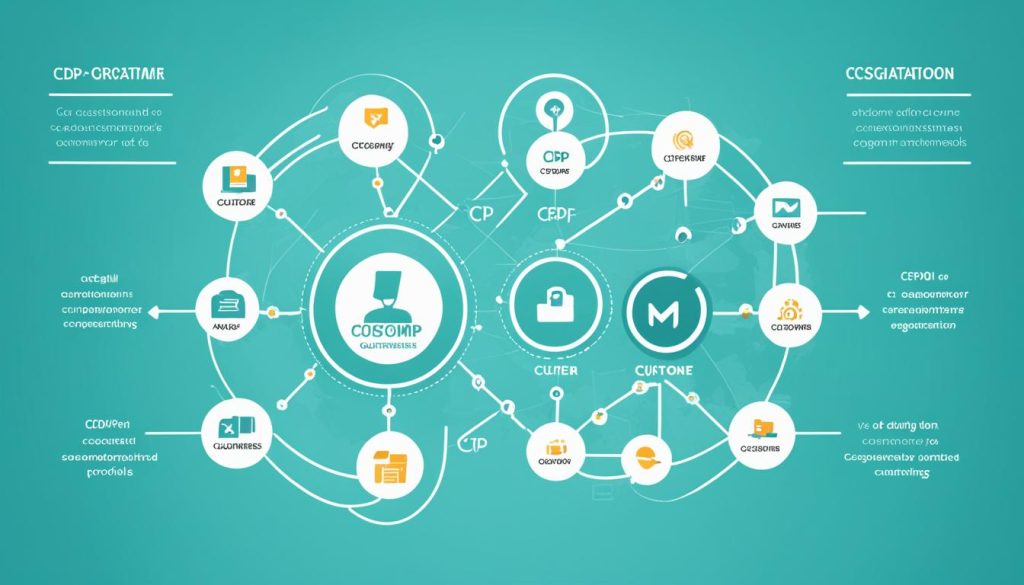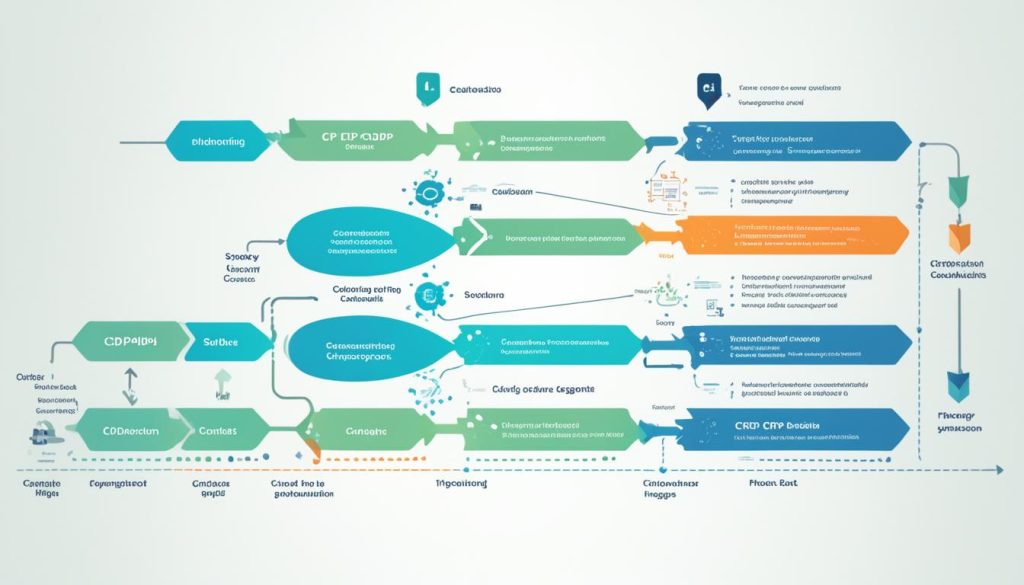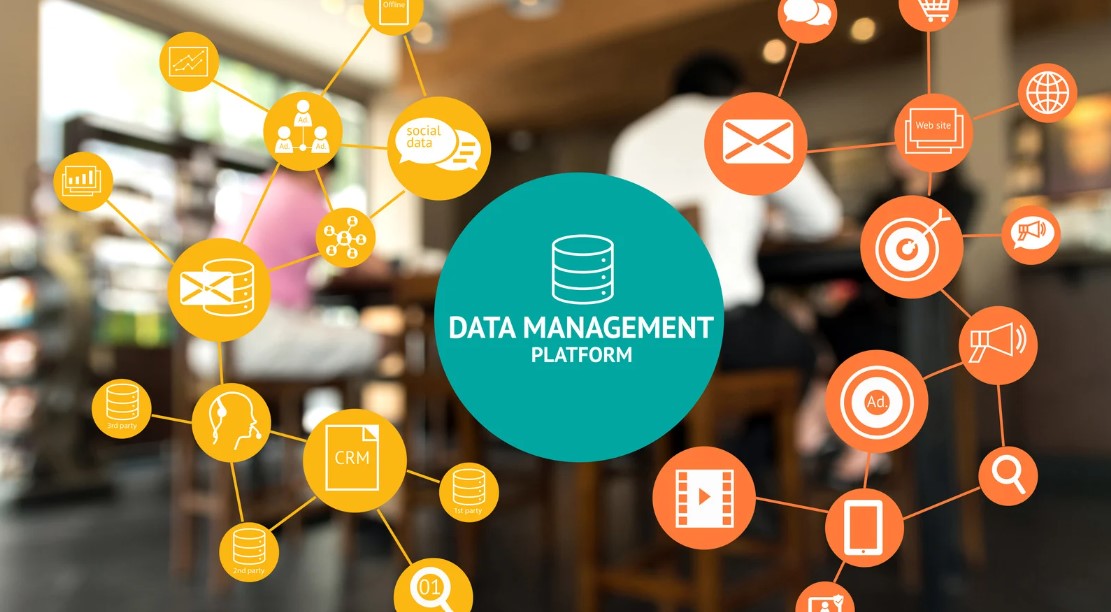In today’s digital age, customer data is a valuable asset for businesses looking to personalize their marketing efforts and improve customer experiences. One key tool that helps companies manage and leverage this data effectively is a Customer Data Platform, or CDP. But exactly what is a CDP?
A CDP is a software platform that collects and organizes customer data from various sources, such as websites, mobile apps, and CRM systems, to create a unified view of each customer. This comprehensive customer profile includes data on their interactions, preferences, and behaviours, enabling businesses to deliver more targeted and relevant marketing campaigns.
In this blog post, we’ll delve deeper into the world of CDPs, exploring their features, benefits, and how they differ from other data management tools. Whether you’re new to the concept or looking to enhance your understanding, this guide will provide you with the insights you need to harness the power of a CDP for your business.
What is a CDP?
A customer data platform (CDP) is an advanced customer data management software solution that centralises and integrates customer data from various sources. It enables businesses to create a unified view of their customers, optimise marketing and customer experience efforts, and comply with data privacy regulations.
CDPs collect and analyse customer data, including behaviour, demographics, and transactional information. They allow for personalised and targeted communication and provide insights for effective data-driven marketing campaigns. CDPs can integrate with other systems and technologies in a company’s marketing technology stack. They offer features like data democratization, customer journey orchestration, and advanced personalisation.
CDPs differ from other data management solutions like data management platforms (DMPs) and customer relationship management (CRM) platforms, as they focus on customer data unification and personalisation at scale.
By implementing a CDP, businesses gain a holistic understanding of their customers, enabling them to deliver tailored experiences and drive revenue growth. Let’s delve deeper into the benefits of using a CDP in the following sections.
The Customer Data Platform (CDP) Institute classifies CDP vendors into four distinct categories, each with its own set of functionalities. Understanding these categories can help businesses choose the right type of CDP to meet their specific needs.

Types of CDPs
1. Data CDPs
These foundational systems focus on aggregating customer data from various source systems, linking it to unique customer identities, and storing this data in a centralized database. Beyond the basic functions, Data CDPs often enable audience segmentation and can share this data with external platforms. Many of these systems originated from tag management or web analytics solutions, retaining some legacy features.
2. Analytics CDPs
Building on the functions of Data CDPs, Analytics CDPs incorporate analytical tools for deeper insights. They include capabilities such as customer segmentation, predictive modeling, and journey mapping. These systems are typically designed to automate data distribution to other applications, making data-driven decisions more efficient.
3. Campaign CDPs
Campaign CDPs take a step further by not only analyzing data but also executing customer engagements. They can design personalized marketing strategies for individual customers within a segment, utilizing various outreach methods like targeted messages or promotions.
4. Delivery CDPs
At the most advanced level, Delivery CDPs integrate data assembly, analytics, and customer engagements with direct message delivery through channels such as email, websites, and mobile apps. Initially developed for messaging, these platforms have evolved to include comprehensive CDP functionalities.
By understanding these types of CDPs, businesses can better align their data strategy with their operational goals.
Benefits of Using a CDP
Using a Customer Data Platform (CDP) comes with a range of benefits for businesses. Let’s explore the advantages that implementing a CDP can bring:
1. Personalized Customer Experiences
A CDP enables businesses to create personalized customer experiences by collecting and analyzing customer data from various sources. By understanding individual customer preferences, businesses can tailor their marketing efforts to deliver relevant and engaging content, products, and services.
2. Targeted Advertising
With a CDP, businesses can leverage customer insights to run targeted advertising campaigns. By segmenting customer data based on demographics, behaviors, and preferences, businesses can ensure that their advertising efforts reach the right audience at the right time, improving conversion rates and return on investment.
3. Improved Customer Engagement
A CDP facilitates better customer engagement by providing businesses with a unified view of their customers. This comprehensive customer data empowers businesses to understand customer interactions across multiple channels, enabling personalized and consistent messaging, interactions, and offers. Improved customer engagement leads to increased customer satisfaction and loyalty.
4. Enhanced Data Accuracy and Efficiency
By centralizing customer data from various sources, a CDP improves data accuracy and eliminates data silos. This allows businesses to obtain a comprehensive and accurate view of their customers, enabling better decision-making and more effective marketing campaigns. Additionally, a CDP reduces manual efforts associated with data processing and analysis, allowing businesses to focus on strategic initiatives.
5. Seamless Integration and Scalability
A CDP can easily integrate with other systems and technologies within a business’s marketing technology stack. This seamless integration allows businesses to leverage the full potential of their existing tools, such as marketing automation platforms, email marketing software, and CRM systems. Moreover, a CDP can scale alongside a business’s growth, accommodating expanding datasets and evolving customer data requirements.
Overall, implementing a CDP provides businesses with the means to unlock the true potential of their customer data. By utilizing the features and capabilities of a CDP, businesses can drive personalized customer experiences, targeted advertising, improved customer engagement, enhanced data accuracy, and seamless integration with other marketing technologies, ultimately leading to better business outcomes.

Common Use Cases for CDPs
Customer Data Platforms (CDPs) are versatile tools that find application in a wide range of industries. Here are some of the most common use cases for CDPs:
1. Personalization and Customer Segmentation:
CDPs help businesses create personalized experiences by leveraging customer data. They enable segmentation based on customer behavior, demographics, and preferences. This allows companies to tailor their offerings and communication to different customer segments, improving engagement and satisfaction.
2. Omnichannel Marketing:
CDPs empower businesses to deliver consistent and relevant messages across various marketing channels, including email, social media, mobile apps, and websites. By integrating data from multiple touchpoints, CDPs enable cohesive messaging that resonates with customers at each stage of their journey.
3. Customer Retention and Loyalty Programs:
CDPs facilitate the identification of customers who are at risk of churn. By analyzing customer data, companies can pinpoint factors that contribute to churn and take proactive measures to prevent it. CDPs also enable the implementation of targeted loyalty programs to nurture long-term customer relationships.
4. Cross-Selling and Upselling:
CDPs provide insights into customer preferences and past purchasing behavior, enabling businesses to identify cross-selling and upselling opportunities. By leveraging this data, companies can offer relevant suggestions and promotions, increasing customer lifetime value.
5. Marketing Attribution and Campaign Optimization:
CDPs help measure the effectiveness of marketing campaigns by tracking customer interactions and attributing them to specific touchpoints. This enables businesses to optimize their marketing efforts by identifying the most successful strategies and channels, maximizing return on investment.
6. Data Privacy and Compliance:
CDPs aid in adhering to data privacy regulations by providing a secure and centralized platform for storing and managing customer data. CDPs enable businesses to handle customer data ethically while ensuring compliance with laws like GDPR and CCPA.

| Common Use Cases for CDPs |
|---|
| Personalization and Customer Segmentation |
| Omnichannel Marketing |
| Customer Retention and Loyalty Programs |
| Cross-Selling and Upselling |
| Marketing Attribution and Campaign Optimization |
| Data Privacy and Compliance |
CDP Implementation and Selection Criteria
Implementing a CDP involves several steps to ensure a smooth integration and optimal use of the platform. By following these implementation steps, businesses can leverage the full potential of a CDP and make data-driven decisions for enhanced marketing effectiveness and customer satisfaction.
Step 1: Define Goals and Objectives
Before starting the implementation process, it is crucial to clearly define the goals and objectives that the CDP aims to achieve. This step involves assessing the specific needs of the business, understanding the desired outcomes, and outlining the key performance indicators (KPIs) that will measure the success of the implementation.
Step 2: Select the Right CDP
Choosing the most suitable CDP for your business requires careful consideration and comparison. Conducting a thorough CDP comparison guide can help evaluate different platforms based on their features, capabilities, scalability, and pricing. It is important to assess how well the CDP aligns with your business requirements and integration needs.
| CDP Comparison Criteria | CDP A | CDP B | CDP C |
|---|---|---|---|
| Scalability | ✓ | ✓ | ✓ |
| Integration with Existing Systems | ✓ | ✓ | ✓ |
| Advanced Personalization Features | ✓ | ✓ | ✓ |
| Cost-effectiveness | ✓ | ✓ | ✓ |
Step 3: Plan and Prepare for Integration
Prior to starting the integration process, it is essential to plan and prepare accordingly. This involves identifying the data sources that will be integrated with the CDP, ensuring data quality and validity, and establishing proper data governance policies. Furthermore, businesses should determine the necessary technical resources and allocate sufficient time and budget for the integration process.
Step 4: Execute the Integration Process
The CDP integration process is a critical phase that requires careful attention to detail. It typically involves data mapping, data transformation, and data validation to ensure accurate and consistent data across the platform. Collaborating with IT experts and CDP implementation specialists can facilitate a seamless integration process.

Step 5: Test and Validate the CDP
After the integration is complete, thorough testing and validation are necessary to ensure the CDP is functioning accurately. This step involves validating data accuracy, checking data synchronization, and testing different use cases to confirm that the CDP meets the defined goals and objectives.
By following these CDP implementation steps and selection criteria, businesses can effectively leverage the power of customer data and enhance their marketing strategies for improved customer experiences and business growth.
Difference Between a CDP and Other Data Management Solutions
Understanding the distinctions between a Customer Data Platform (CDP) and other data management solutions is essential for organizations looking to optimize their customer engagement strategies. Each platform serves unique purposes, which can lead to confusion without clear differentiation.
Customer Data Platform (CDP):
- Centralizes customer information from various sources to create comprehensive profiles.
- Provides unified data that can be utilized across different tools in a business’s technology stack, enhancing customer interactions.
Data Management Platform (DMP):
- Primarily used for advertising, focusing on building profiles of anonymous users.
- Manages and analyzes audience data for marketing campaigns, connecting with ad networks to optimize targeting efforts.
Customer Relationship Management (CRM):
- Customer Relationship Management aims to manage customer relationships by tracking interactions throughout the customer lifecycle.
- Records details such as purchase history, support interactions, and communication logs, fostering improved customer service and retention.
By understanding these differences, businesses can choose the right solution to meet their specific data management needs and drive effective customer engagement.
Conclusion
In conclusion, a Customer Data Platform (CDP) is vital for businesses aiming to leverage customer data for personalized marketing and enhanced customer experiences. By providing insights into individual preferences and behaviors, CDPs facilitate tailored campaigns that boost engagement and satisfaction.
They also enable targeted advertising, ensuring relevant offers reach the right customers at optimal times. Integrating data from diverse sources allows businesses to make informed decisions and optimize customer journeys, ultimately improving acquisition and loyalty. To maximize effectiveness, organizations must carefully assess their needs and adhere to best practices when selecting a CDP.
FAQs
What does a CDP do?
A CDP enables businesses to create a unified view of their customers, optimize marketing and customer experience efforts, and comply with data privacy regulations.
How does a CDP differ from other data management solutions?
CDPs differ from other data management solutions like data management platforms (DMPs) and customer relationship management (CRM) platforms, as they focus on customer data unification and personalization at scale.
What are the steps involved in implementing a CDP?
Implementing a CDP involves several steps, including data integration, data cleansing and enrichment, defining customer segments, creating personalized experiences, and measuring and optimizing campaigns.
What criteria should businesses consider when selecting a CDP?
When selecting a CDP, businesses should consider factors such as data integration capabilities, scalability, ease of use, security measures, and compatibility with existing marketing technology stack.
How does a CDP integrate with other systems and technologies?
CDPs can integrate with other systems and technologies in a company’s marketing technology stack, such as marketing automation platforms, email service providers, and analytics tools, to ensure seamless data flow and effective campaign execution.
How can businesses choose the right customer data platform?
Businesses should choose the right customer data platform by carefully assessing their specific requirements, evaluating different CDP vendors, considering their budget and long-term goals, and seeking recommendations from industry experts or peers.





